6 Software Release Notes Templates to Optimize Product Experience
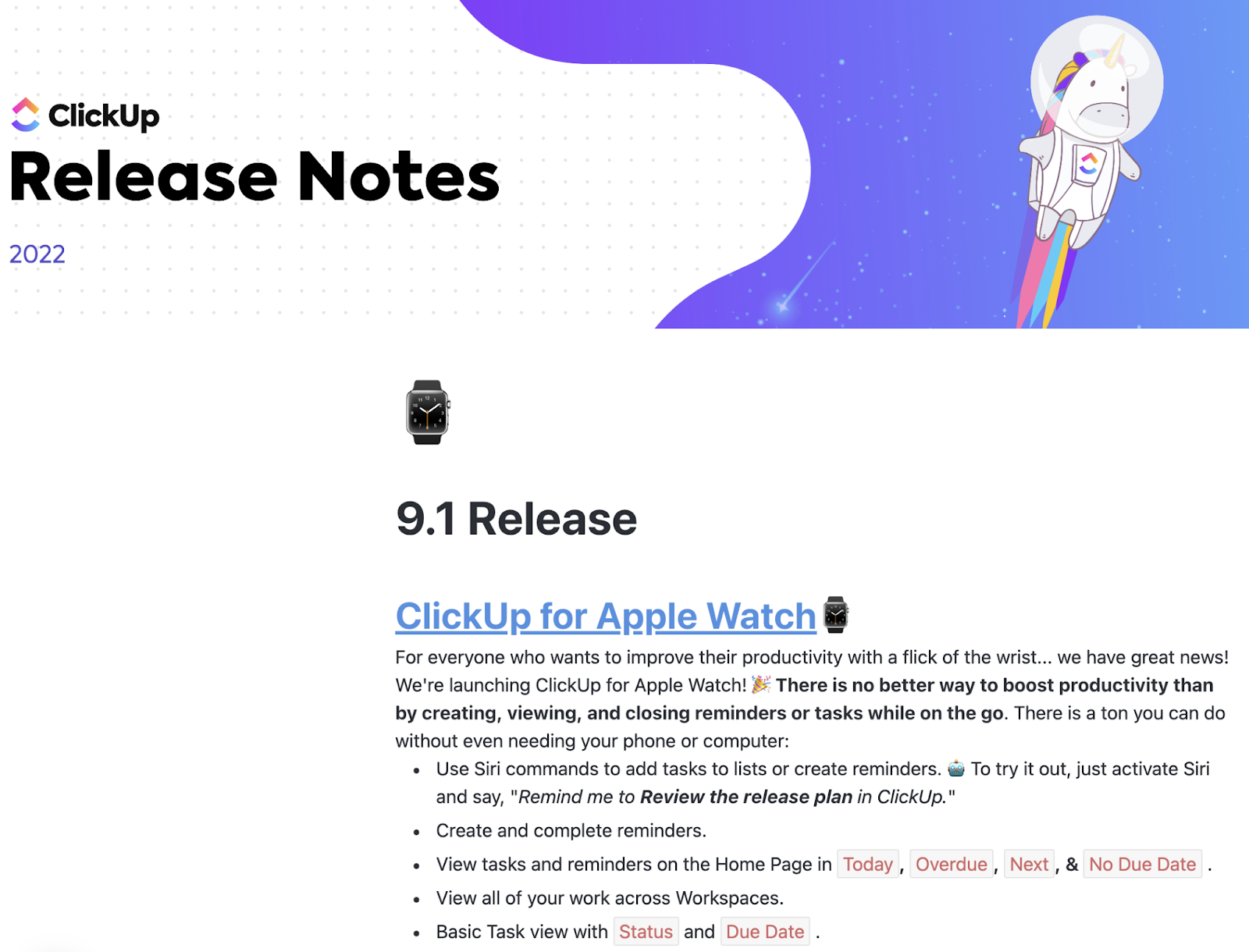
Sorry, there were no results found for “”
Sorry, there were no results found for “”
Sorry, there were no results found for “”

Let’s get right to it: Software release templates contribute to repeat success. But how do you encourage your fellow developers, engineers, and product managers to naturally adopt and follow templates?
Urgent requests, app sprawl, and poor team communication are hard hitters to productivity, and adding templates sometimes feels like Another Project No One Asked For.
But if these budget-wasting events continue, product speed and delivery weaken, and that’s not a reality we want for you!
Any tool we use has the potential to burden our productivity—when it’s mismanaged. If we can share our experience in productivity to help you organize your release delivery process in any way, we’re not going to hold back.
There are great templates and examples here to unpack, but if you’re curious about using ClickUp for product management, start today! 🌐
We’ll explore five release note templates, practical tips to gain from them, and a step into a day-by-day guide to writing and publishing release notes.
Software release notes are technical documentation distributed with a new or updated product release to announce changes, bug fixes, and improvements. Your release notes keep users informed of what your team has been working on to meet their expectations. ⚡️
Release notes should be your customer’s go-to to answer their basic question: What do I need to know?
Depending on your industry—entertainment, business, travel, or social networking—these public release notes are generally distributed on these channels: the company’s website, blog, in-app notifications, email, application stores, and social media.
Technical documentation isn’t the most desired by customers (looking at you, Terms and Conditions), but release notes are in their own classification. They’re a knowledge base to give your customers the best experience with your product. 💡
Using unfamiliar words in your release notes isolates and confuses customers. For this reason, try to avoid technical jargon!
Like a song and dance, release notes are about preparation, timing, and delivery.
They’re a direct line to retain frustrated users and re-engage users. So don’t hold off on writing release notes until the night before launch day. ⌛️
Whether your organization is in year two or ten, the software release notes templates we’ve shortlisted range from basic documentation to a productivity suite. So there’s something for everyone!
📮ClickUp Insight: Low-performing teams are 4 times more likely to juggle 15+ tools, while high-performing teams maintain efficiency by limiting their toolkit to 9 or fewer platforms. But what if you could manage everything in one place — including your release notes?
As the everything app for work, ClickUp brings your tasks, projects, docs, wikis, chat, and calls under a single platform, complete with AI-powered workflows. Ready to work smarter? ClickUp works for every team, makes work visible, and allows you to focus on what matters while AI handles the rest.
Our first software release notes template is brought to you by ClickUp Docs!
The ClickUp Release Notes Template packs content placeholder and visual examples at your disposal to spark creative decisions for a positive impact on your customer’s reading experience.
Here are a few time-saving (and free!) features of Docs you’ll love alongside your release content:
From idea to release, prioritize and plan your initiatives, epics, and issues—all in one place. 🧑💻
Check out our list of release management tools!
Stay on track with your software updates using the ClickUp Release Notes Template. Our homegrown solution provides a dynamic and user-friendly platform for managing release trains – the organized and timely delivery of software updates. Designed to keep your teams and stakeholders aligned, this release notes template guarantees everyone is moving in sync towards shared objectives.
ClickUp’s Release Notes Template makes it easy to keep track of advancements, bug fixes, and improvements–providing clarity on what’s newly available in each product version. By offering a concise and helpful breakdown of each software release, ClickUp helps your team communicate effectively about the work that has been done and plan for the upcoming tasks.
Staying on top of software updates need not be challenging. With ClickUp’s Release Notes Template, you can maintain a predictable release schedule, ensuring all parties involved are informed about the progress and know what to expect. Whether you’re a developer documenting the details of a software update, or a project manager overseeing the smooth rollout of updates, our template can cater to your needs effectively.

You’ll learn and thing or two about a traditional release note format with Microsoft Word’s template! This is a good example of consistent language you’ll want to aim for when writing release notes. (More about this later!)
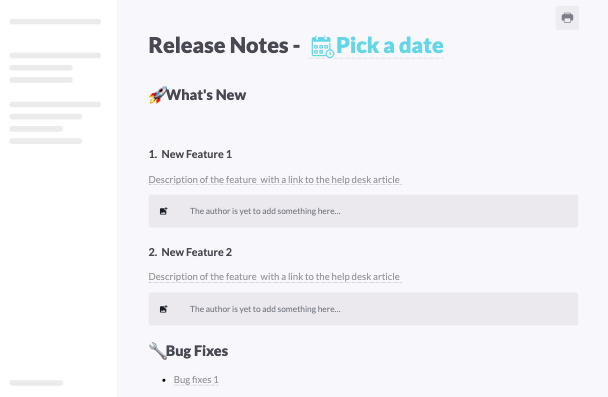
The next template by Kipwise is another example of great release notes to communicate updates with customers. If you’re looking for a done-for-you template to send to your technical writer or product manager to write release notes, they’ll have a skeleton outline to get started right away.

This next release notes template in Microsoft Word is an editable document with a dedicated release note section for each main topic: Introduction, Key Modifications, Configuration Notes, and Known Issues.
We’ve covered why you should avoid technical jargon at every turn possible. But if your software is designed for product enthusiasts who follow the tech-y terms, this template will show you how to organize your release notes for readability and flow.
(See, there’s something for everyone on this list!)

Last but not least, this fill-in-the-blank template breaks down all the critical parts of a release document for you to consider. Full disclaimer, this template is…a lot..especially if customers prefer to read every word. (Spoiler: They don’t!) But don’t let that turn you away.
The placeholders are exactly what a good release notes template needs to take the guesswork out of “What goes here?” We can never underestimate how forgetful we can be about the small details, no matter how many product release notes we’ve put out!
If you’ve ever been curious about ClickUp, the first thing you need to know is supporting development work is part of who we are.
Most agile teams in hybrid or close to fully-remote workplaces are going through stages of productivity highs and lows. Mistakes are repeated, systems are put in place, then something comes up and turns everything upside down. Your team members are masters at self-organizing, but you know there’s a better way to remove productivity barriers so they can focus on needle-moving work.
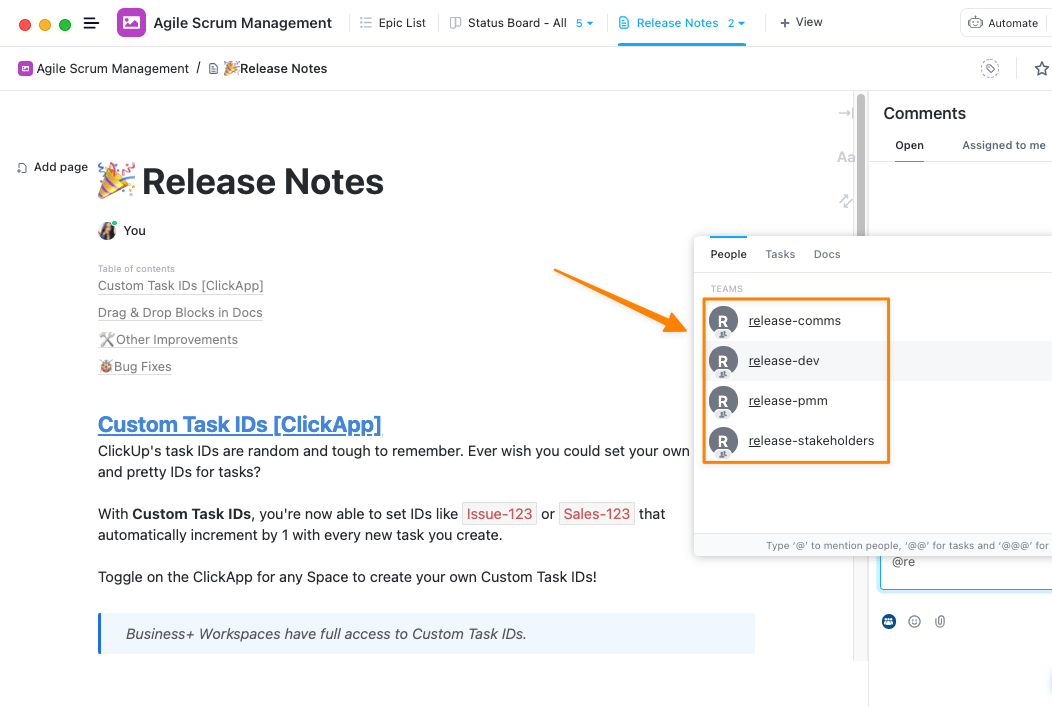
While there’s no magic wand to make these common problems disappear, tools like ClickUp were designed to put the workflow customization power in the hands of teams.
And product teams love using ClickUp because they have high-level visibility across multiple teams or get the granular details of any project or dependency when needed.
Before ClickUp, it was just crazy. We’d ship something and have to do rollbacks because the feature had too many bugs and was not well planned. We’ve seen a major decrease in bugs reported, and ClickUp helps us to avoid a lot of problems.
We want your release notes creation process to be an intuitive tool for managing cross-functional projects—and removing the unnecessary Zoom meetings from everyone’s calendar!
In this guide, we’ll see the collaborative process for a hybrid organization to write interactive release notes in five days. 🗓
Task templates in ClickUp set the expectations for all teams involved. It’s the central location for each feature team to deliver written explanations, short videos, and other supporting materials for the upcoming release. This frees up everyone’s valuable time from administrative work and chasing updates.
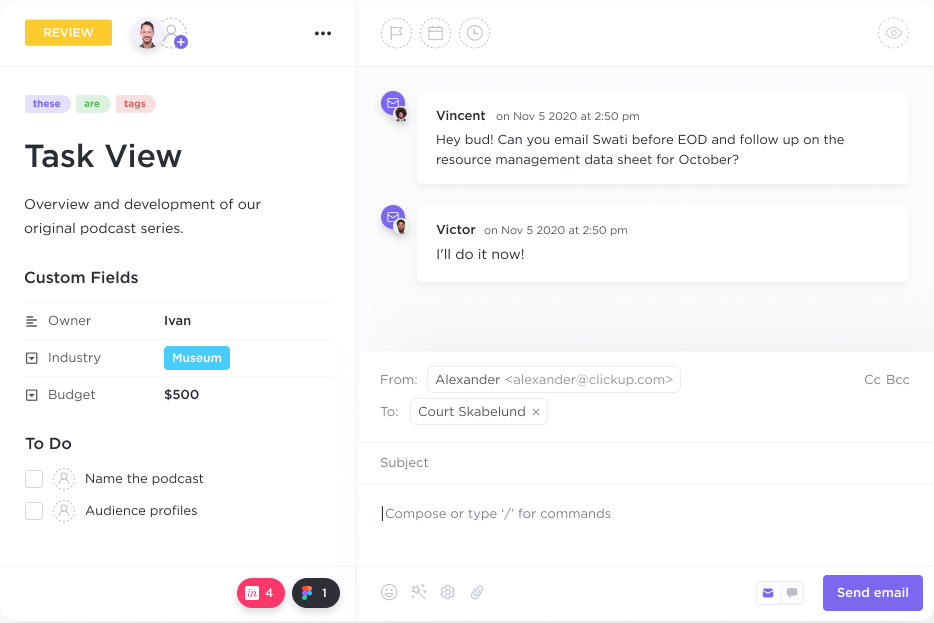
Now to the main event: writing the product release notes! ClickUp’s Release Notes template allows document contributors to edit in real-time and @mention individual people or groups during writer’s block. ✍️
Must-haves for your release notes include:
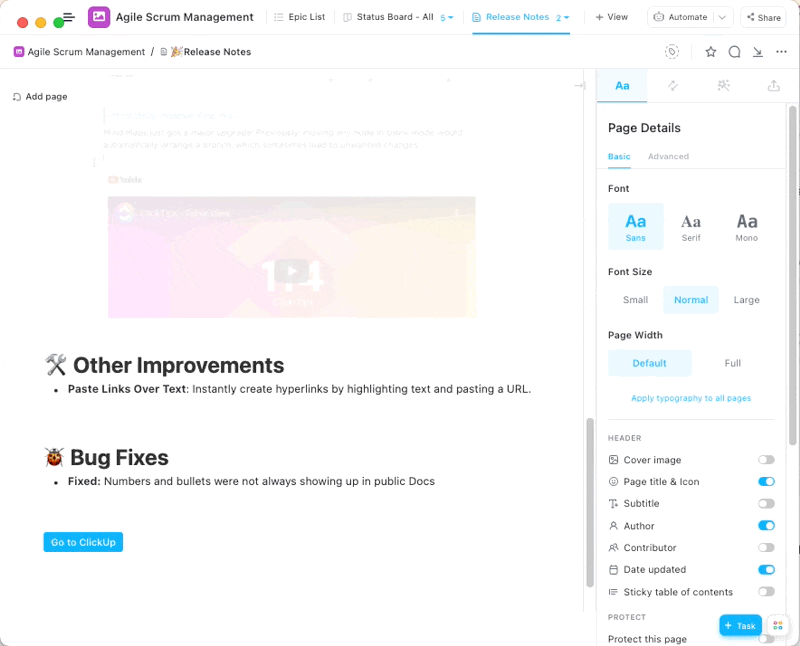
An agile workflow in ClickUp removes the need to hunt for information. When you’re in the middle of writing release notes, you’ll constantly reference things from tasks. Which is why the Relationships in ClickUp feature will become your newest obsession.
Simply link your release notes document to release-related resources from your Workspace. Cross-referencing no longer becomes a chore but a productivity boost with ClickUp!
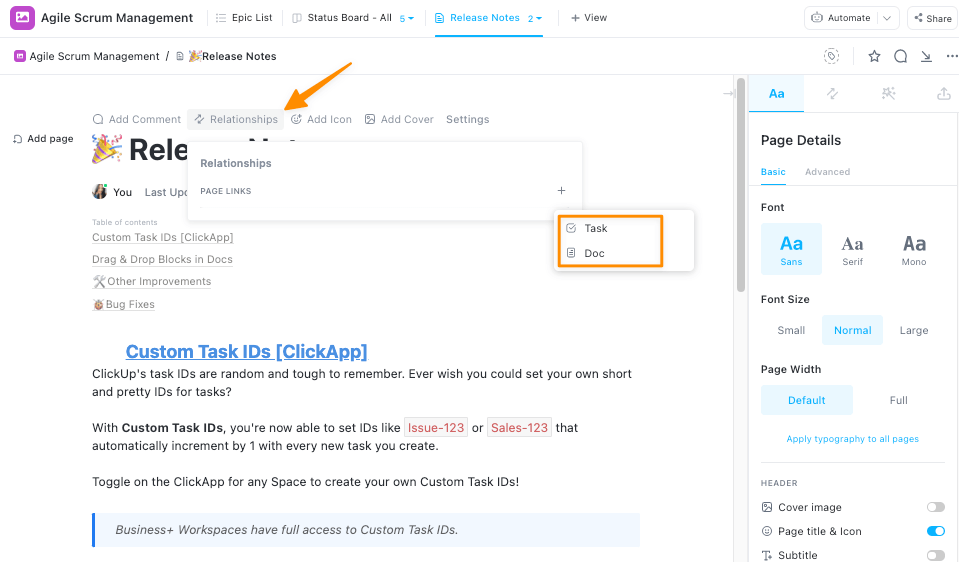
Drafting release notes can be tedious, but ClickUp Brain simplifies the process. With AI, you can quickly generate professional drafts, refine content, and ensure clarity and consistency. Provide key details like new features, improvements, and bug fixes, and Brain will create a structured release note for you.
Example Prompt:
“Generate a release notes draft for version 2.5 of our project management software. Include sections for New Features, Improvements, and Bug Fixes. Highlight the addition of an AI-powered task prioritization feature, performance improvements for large projects, and fixes for recurring task scheduling issues.”

Why ClickUp Brain?
With ClickUp Brain, creating release notes becomes faster, easier, and more collaborative.
After all outstanding items are cleared, formatting is complete, and the writing proofed, it’s time for the stakeholder’s review! 🔍
You can choose to assign a comment within the document to alert stakeholders or send them the direct URL if they’re not in your Workspace. This prevents sending multiple copies to different people.
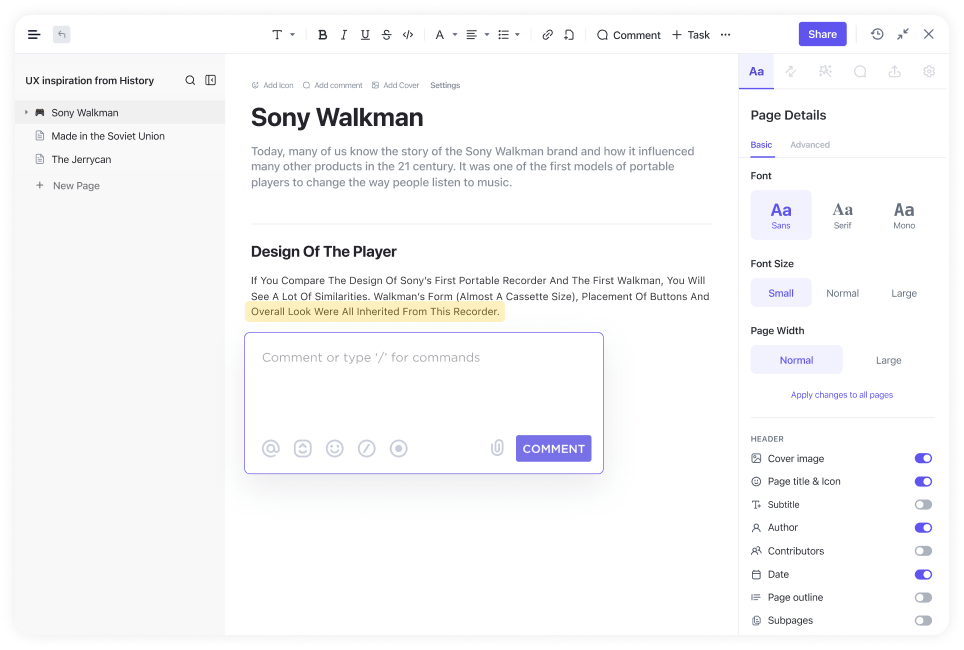
Keeping everyone engaged in the hours leading to the release relies on transparent communication. Enter: Chat in ClickUp!
Chat replaces Slack threads and one-off emails to streamline the remaining questions and last-minute requests.

When the release manager confirms the software updates are pushed to production, it’s time to publish the release notes! 🎉
After a well-deserved team celebration, it’s time to look forward to the next release. Go back to Day One and repeat the process with your customized templates again!
You’re taking care of your customers, but who’s taking care of you?
We’ve given you some things to think about, but you don’t have to work out this process alone! At times, we need a fresh perspective to show us better, safer, and cost-effective ways to do work.
Templates are just the beginning! Our team at ClickUp is ready to help you build scalable release systems. ⚙️
With the right templates and tools like ClickUp, you can turn the release notes process into a smooth, efficient workflow. Streamlining communication, eliminating jargon, and aligning your team ensures your customers stay informed and engaged with every update.
Ready to simplify your release process? Sign up with ClickUp and experience a more organized, efficient approach to managing software updates.
© 2025 ClickUp